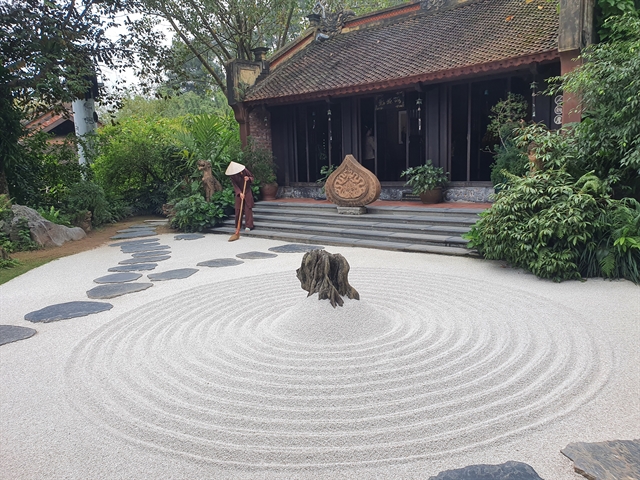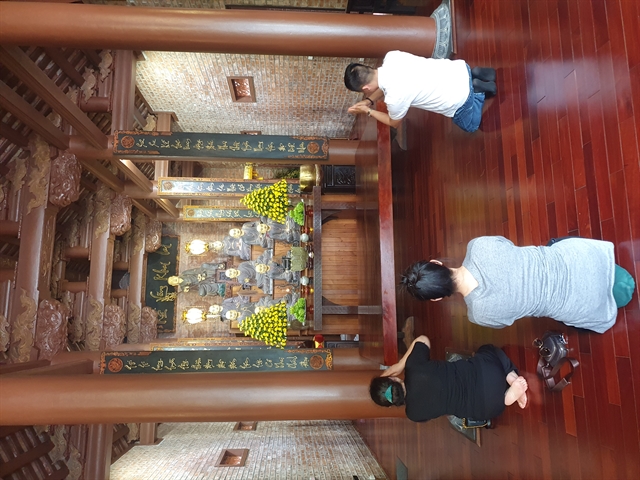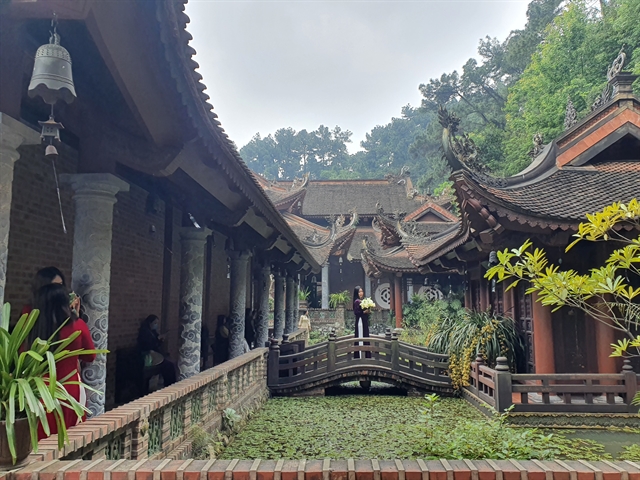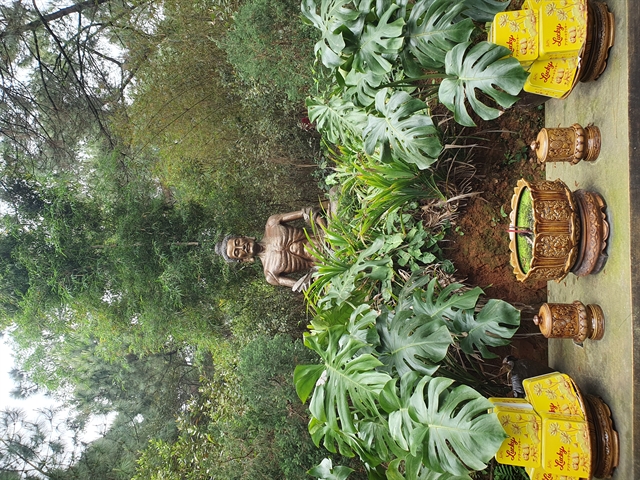Weather:
- Ha Noi 22oC
- Da Nang 22oC
- Ho Chi Minh 31oC

Lương Hương
Taking short, unplanned trips has been a favourite activity for my friends and I, whenever we want a brief escape from the bustling city life. On a recent trip this month, we visited Địa Tạng Phi Lai, an ancient pagoda in the northern province of Hà Nam that has been drawing pilgrims and travellers from near and far.
The pagoda is located in Ninh Trung Village, about 70km from Hà Nội. The distance enables visitors to drive there themselves in about one hour by car or motorbike, take a coach from Giáp Bát or Mỹ Đình coach station, or book a van.
Địa Tạng Phi Lai, formerly called Đùng Pagoda, is nestled against a mountain. According to local elders, the pagoda was built in the 11th century and comprised more than 100 structures. It is said that Emperor Trần Nghệ Tông (1321-1395) spent some time here in seclusion, and Emperor Tự Đức (1829-1883) prayed for descendants in this place.
Over time, natural disasters and wars significantly deteriorated the structure and the landscape of the original pagoda. It was abandoned until December 2015 when Venerable Thích Minh Quang took over it and began the restoration, renaming the pagoda to Địa Tạng Phi Lai.
"Địa Tạng" is the title of a Bodhisattva who has a great aspiration to save and liberate all souls. Therefore, whenever the name of the pagoda is mentioned, it reminds each of us of that aspiration, urging us to choose compassionate thoughts and a way of life for the benefit of all.
The pagoda has become a must-visit site for thousands in the past five years, especially during the Lunar New Year festive season. This spiritual tourism destination charms visitors with its majestic yet serene landscape, tranquillity and unique architectural features.
At this sacred site, we followed a narrow path that runs through vast paddy fields on both sides. The air enveloped us with its refreshing coolness. Upon reaching the entrance of the pagoda, we were greeted by a landscape seemingly untouched by the passage of time – a harmonious blend of vibrant greenery and a mountain backdrop.
Standing out amidst this space are beds of white pebbles, adorned with carefully placed tiles and stones, forming pathways. Twelve circles are intricately drawn on the pebble ground, symbolising the twelve connections or karmic ties of human beings. There is a signboard that reads Khổ hải (biển khổ) vì là biển nên xin hãy đi lên bờ (The sea of sufferings is a sea, so please walk on the shore), gently reminding visitors to walk on the smooth stones instead of stepping on the pebbles.

The layers of white pebbles create a sense of purity and cleanliness, where every step feels like gliding on gentle waves. Wind chimes are a special feature at Địa Tạng Phi Lai Pagoda. Rows of wind chimes produce a joyous symphony of sound, offering a sense of light happiness and tranquillity.
The typical architecture of a pagoda in northern Việt Nam harmoniously blends with surrounding nature, which is also the most remarkable feature of this place. The largest building in the pagoda is the Tam Bảo (Three Jewels) hall, housing the statue of Đức Địa Tạng (Earth Store Bodhisattva) at its centre.
To its right is the ancestor worship hall, where 42 generations of abbots who once presided over the pagoda are honoured. There is a small temple dedicated to the Bodhisattva Quan Thế Âm (Avalokitesvara), as well as shrines for revered figures such as Đức Ông (Ancestral Master) and Đức Thánh Hiền (Holy Virtuous).

The pagoda also features residential quarters for monks and lay Buddhists who reside within the temple grounds, and a lecture hall where the resident abbot delivers daily sermons and conducts meditation sessions. This area serves as a gathering place for monks and lay practitioners to listen to the teachings and participate in retreats.
Visitors from afar who wish to partake in retreats and immerse themselves in the experiences offered by the pagoda can stay in guest accommodations provided at the pagoda.
Crowds of people flock here not only to pray for all things good for themselves and their families, but also to immerse themselves in spiritual places and to be guided towards the fundamental values of Buddhism to find solace and inner peace. Many young people have visited the pagoda to capture beautiful memories in the serene space.

For those who love reading, especially books that nourish the soul, this is truly a paradise with an impressive number of books covering the walls. Additionally, you can also walk in the peaceful space of the pagoda to enjoy tea, observe the koi fish swimming around the ponds or admire the orchids behind the ancestral hall.

To have an overview of the surrounding scenery, we took the small path up the mountain behind Địa Tạng Phi Lai Pagoda. It doesn't have any signposts, allowing each person to choose their own route to explore. There are some resting places along the way, exhibiting each growing phase of Địa Tạng Bodhisattva from a young boy until attaining enlightenment.

“I have visited many pagodas before but Địa Tạng Phi Lai seems to impress me the most with its fresh, peaceful and serene atmosphere, as well as the poetic surrounding landscape. I feel like I myself have been salvaged,” said Nguyễn Thị Hạnh, a 56-year-old visitor from Hà Nội.
“It is such a peaceful sanctuary from the hustle and bustle of city life. I will certainly come back,” she added. VNS


